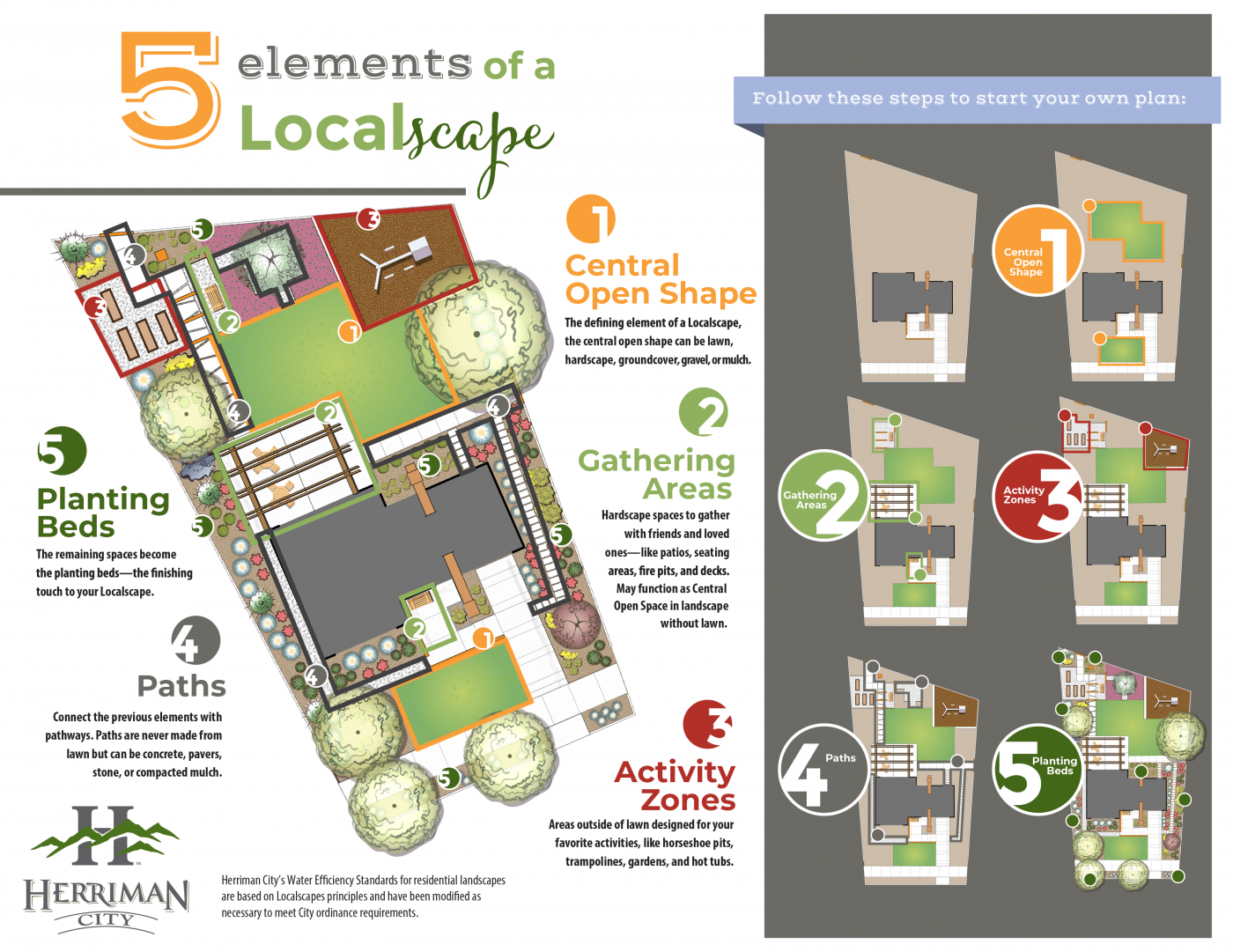5355 West
Herriman Main Street
Herriman, UT 84096
- City Council
- Planning Commission
- City Administration
- Gov 101
- Property Tax
- Public Notices
- Ordinances and Code
- Police Department
- Community Services
- Animal Services
- City Services
- City Recorder
- Court
- Elections
-
Building
- Additions/Remodels
- Approved Trees
- Basement Finishes
- Basement Walkouts
- Building Codes and Design Criteria
- Building Department FAQs
- Building Helpful Links
- Cardfile System
- Commercial Construction
- Commercial Remodel
- Decks
- Demolitions
- Detached Structures
- Electrical/Mechanical/Plumbing
- Fences
- Grading/Drainage
- Home and Building Safety
- Internal Accessory Dwelling Units (I-ADU)
- Landscaping Requirements
- Multi-Family Dwellings
- Owner/Builder Declaration
- Patio/Porch/Deck Roof Covers
- Pools & Ponds
- Re-Roofs
- Rock/Masonry Walls
- Signs
- Single Family Dwellings
- Solar Panels and Batteries
- Tenant Finishes
- Transfer of Permit Ownership
- Water Efficiency Standards
- Communications
- Human Resources
- ITS
- Master Plans & Capital Facility Plans
- Engineering
- Finance
- Planning and Zoning
- Public Works
- Master Fee Schedule
- Transparency
- Hunting Information
Water Efficiency Standards
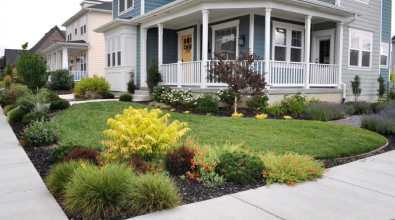
The purpose of these Water Efficiency Standards is to conserve the public’s water resources by establishing water conservation standards for indoor plumbing fixtures and outdoor landscaping.
The standards are required for all developer/contractor installed residential, commercial, institutional, and industrial construction, as applicable. The Outdoor Landscaping Standards shall also be required for new and rehabilitated landscaping installed by homeowners.
Water Efficiency Standards are designed to offer all sorts of benefits like reduced maintenance, simplified irrigation, high curb appeal—and of course, save water. Following this checklist is the best way to ensure your landscaping project will deliver the benefits you expect. If your project doesn’t meet these requirements, it may not receive approval from the City.

Outdoor Landscaping Requirements
All new and rehabilitated landscaping for public agency projects, private development projects, developer-installed landscaping in multi-family and single-family residential projects within the front and side yards, and homeowner provided landscape improvements within front and side yards shall comply with the landscaping standards set forth.
- All irrigation shall be appropriate for the designated plant material to achieve the highest water efficiency.
- Each irrigation valve shall irrigate landscaping with similar site, slope and soil conditions, and plant materials with similar watering needs.
- Landscaped areas shall be provided with a WaterSense labeled smart irrigation controller which automatically adjusts the frequency and/or duration of irrigation events in response to changing weather conditions.
- At least 3-4 inches of Mulch, permeable to air and water, shall be used in Planting Beds to control weeds and improve appearance of the landscaping.
- At maturity, landscapes are recommended to have enough plant material to create 50% living plant cover at the ground plane, not including tree canopies.
- Lawn shall not be installed in Park Strips, Paths, or on slopes greater than 25% or 4:1 grade and be less than 8 feet wide at its narrowest point.
- In residential landscapes, the landscaping shall adhere to the Localscapes requirements.
- In commercial, industrial, institutional, and multi-family development common area landscapes, Lawn areas shall not exceed 20% of the Total Landscaped Area, outside of Active Recreation Area.
Checklist
(recommended areas - property owners may choose any or all elements to include in their plan)
Central Open Shape
Localscapes begin with a Central Open Shape that is geometric in nature. The size and material used for this element can be unique to each landscape, but typically there will be a Central Open Shape in both the front and back yards.
Design Requirements:
- The Central Open Shape is unobstructed. Trees, posts, planting beds, playsets, and other elements are not placed inside this area.
- The Central Open Shape is created with a permanent material that is different from and creates contrast with the surrounding landscape.
- The Central Open Shape has a clearly defined edge.
- The Central Open Shape shall not exceed the greater of 250 sq. ft., or 35% of the total landscaped area.
- The Central Open Shape cannot be lawn if it is on a slope with more than a 25% grade.
Additional Requirements if Lawn is used as a Central Open Shape:
- The Central Open Shape is irrigated separately. This is the only landscape element that can use overhead sprinklers. All other irrigated areas will use a drip system.
- The Central Open Shape is at least 8 feet wide at its narrowest point.
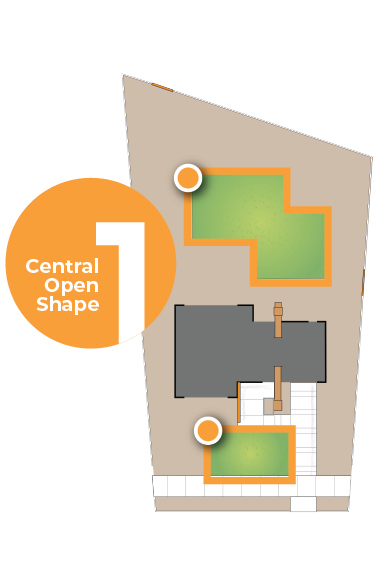
Gathering Areas
Gathering Areas like patios, gazebos, or outdoor seating areas of varying sizes are incorporated throughout the landscape.
Design Requirements
Gathering Areas are hardscaped. Surfacing materials may include concrete, brick pavers, stone, gravel, or crushed stone.
In a landscape without lawn, Gathering Areas may function as the Central Open Space.
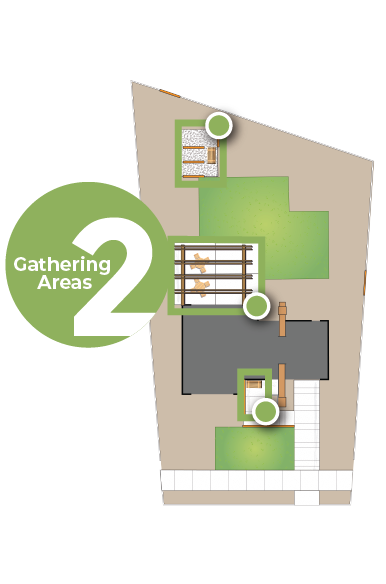
Activity Zones
Activity Zones like children’s play areas, fire pits, vegetable gardens, and hot tubs are designed to meet a homeowner’s needs and interests.
Design Requirements:
Activity Zones are not surfaced with lawn.
Activity Zones are placed outside the Central Open Shape.
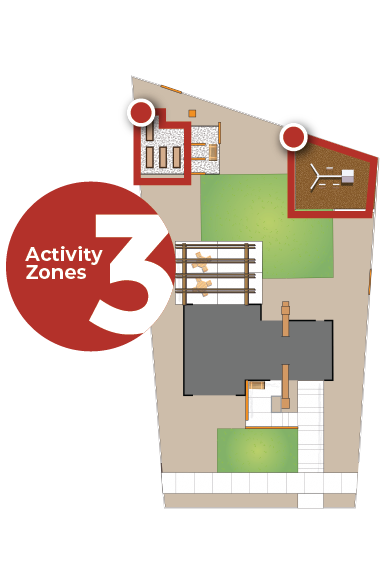
Paths
Paths connect each of the previously designed elements.
Design Requirements:
Paths are not lawn. Paths can be created with hardscape, pavers, mulch, or another groundcover.
Paths are not irrigated.
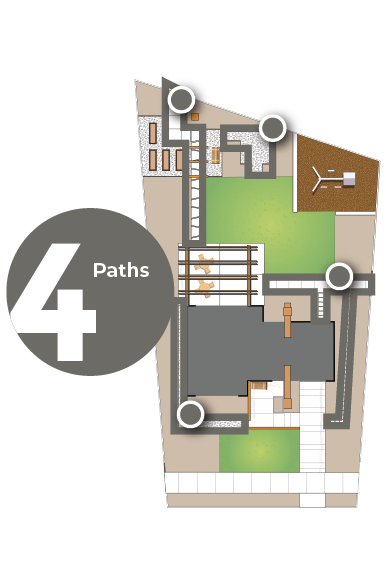
Planting Beds
Remaining areas of the landscape become Planting Beds.
Design Requirements:
Planting beds are drip irrigated. Drip systems should be equipped with a pressure regulator, filter, flush-end assembly and any other appropriate components. Micro-sprays and bubblers are not allowed in planting beds.
Planting beds have at least 50% plant coverage at maturity and are covered in 3-4” of mulch.
Park Strips Design Requirement:
Lawn is not allowed in park strips. Park strips should be designed with hardscape, mulch, and other planting materials.
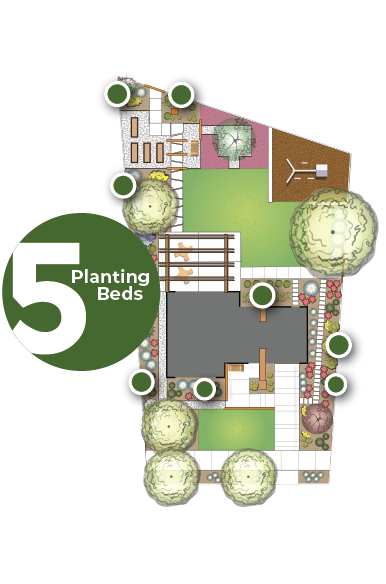
Localscapes Guidelines
Herriman City’s Water Efficiency Standards for residential landscapes are based on Localscapes principles and have been modified as necessary to meet City ordinance requirements.
The Ordinance
1. Purpose
The purpose of these Water Efficiency Standards is to conserve the public's water resources by establishing water conservation standards for indoor plumbing fixtures and outdoor landscaping.
2. Applicability
The standards contained herein shall be required for all developer/contractor installed residential, commercial, institutional, and industrial construction, as applicable. The Outdoor Landscaping Standards shall also be required for new landscaping construction installed by homeowners.
3. Definitions
- “Activity Zones” means portions of the landscape designed for recreation or function, such as storage areas, fire pits, vegetable gardens, and playgrounds.
- “Active Recreation Areas” means areas of the landscape dedicated to active play where Lawn may be used as the playing surface (ex. sports fields and play areas).
- “Central Open Shape” means an unobstructed area that functions as the focal point of Localscapes and is designed in a shape that is geometric in nature.
- “Gathering Areas” means portions of the landscape that are dedicated to congregating, such as patios, gazebos, decks, and other seating areas.
- “Hardscape” means durable landscape materials, such as concrete, wood, pavers, stone, or compacted inorganic mulch.
- “Lawn” means ground that is covered with grass or turf that is regularly mowed.
- “Localscapes®” means a landscaping approach designed to create locally adapted and sustainable landscapes through a basic 5-step approach (central open shape, gathering areas, activity zones, connecting pathways, and planting beds).
- “Mulch” means any material such as rock, bark, compost, wood chips or other materials left loose and applied to the soil.
- “Park Strip” means a typically narrow landscaped area located between the back-of- curb and sidewalk.
- “Paths” means designed routes between landscape areas and features.
- “Planting Bed” means areas of the landscape that consist of plants, such as trees, ornamental grasses, shrubs, perennials, and other regionally appropriate plants.
- “Total Landscaped Area” means improved areas of the property that incorporate all of the completed features of the landscape. The landscape area does not include footprints of buildings or structures, sidewalks, driveways, and other non-irrigated areas intentionally left undeveloped.
4. Indoor Fixture Requirements
It is recommended and encouraged, but not mandated, that all new and future construction and future additions, remodels, or refurbishments install plumbing fixtures that have the WaterSense label, including: lavatory faucets, shower heads, sink faucets, water closets (tank and flushometer-valve toilets), and urinals, to the extent Utah law allows municipalities or local districts to require these fixtures.
5. Outdoor Landscaping Standards
All new and rehabilitated landscaping for public agency projects, private development projects, developer-installed landscaping in multi-family and single-family residential projects within the front and side yards, and homeowner provided landscape improvements within the front and side yards of single and two-family dwellings shall comply with the landscaping standards set forth in Section 6 below. It is recommended and encouraged, but not mandated, that rear yard landscape improvements of single and two-family dwellings comply with these same standards.
6. Landscaping Requirements
- All irrigation shall be appropriate for the designated plant material to achieve the highest water efficiency. Drip irrigation or bubblers shall be used except in Lawn areas. Drip irrigation systems shall be equipped with a pressure regulator, filter, flush- end assembly, and any other appropriate components.
- Each irrigation valve shall irrigate landscaping with similar site, slope and soil conditions, and plant materials with similar watering needs. Lawn and Planting Beds shall be irrigated on separate irrigation valves. In addition, drip emitters and sprinklers shall be placed on separate irrigation valves.
- Landscaped areas shall be provided with a WaterSense labeled smart irrigation controller which automatically adjusts the frequency and/or duration of irrigation events in response to changing weather conditions. All controllers shall be equipped with automatic rain delay or rain shut-off capabilities.
- At least 3-4 inches of Mulch, permeable to air and water, shall be used in Planting Beds to control weeds and improve the appearance of the landscaping.
- At maturity, landscapes are recommended to have enough plant material (perennials and shrubs) to create at least 50% living plant cover at maturity at the ground plane, not including tree canopies.
- Lawn shall not be installed in Park Strips, Paths, or on slopes greater than 25% or 4:1 grade and be less than 8 feet wide at its narrowest point. To the extent reasonably practicable, Lawn shall be free from obstructions (trees, signs, posts, valve boxes, etc.).
- In residential landscapes, the landscaping shall adhere to the following Localscapes requirements and shall be properly labeled on the landscape plan submitted to the City for review:
- If size permits, the landscaped areas of the front yard and back yard shall include a designed Central Open Shape created by using Lawn, Hardscape, groundcover, gravel, or Mulch.
- Gathering Areas shall be constructed of Hardscape and placed outside of the Central Open Shape. In a landscape without Lawn, Gathering Areas may function as the Central Open Shape.
- Activity Zones shall be located outside of the Central Open Shape and shall be surfaced with materials other than Lawn.
- Paths shall be made with materials that do not include Lawn, such as Hardscape, Mulch, or other groundcover.
- Lawn areas shall not exceed the greater of 250 square feet, or 35% of the Total Landscaped Area.
- Small residential lots, where the Total Landscaped Area is less than 250 square feet, and where the front yard dimensions cannot accommodate the minimum 8 feet wide Lawn area requirement of the Landscaping Requirements in section F, are exempt from the 8 feet minimum width Lawn area requirement.
- In commercial, industrial, institutional, and multi-family development common area landscapes, Lawn areas shall not exceed 20% of the Total Landscaped Area, outside of Active Recreation Areas.
- Certain special purpose landscape areas (e.g. stormwater management areas, etc.) may receive exceptions from the slope limitations and other elements of the Landscaping Requirements (see Paragraph F, above). Applications to receive exceptions are to be considered on a case-by-case basis.
- These outdoor standards are not intended to be in conflict with other landscaping requirements as defined by Utah law, including stormwater retention requirements and low-impact development guidelines. Notwithstanding these outdoor standards, whenever any requirement may be in conflict with Utah law, such conflicting requirements shall not apply.
| Property size (acres and sqft) | ||
| Building footprint | ||
| Hardscape % of Property size | ||
| Overall Landscape sqft | Required | Provided |
| Live plant material sqft | Required | Provided |
| Trees 1 tree/500 sqft | Required | Provided |
| Trees in lawn areas | Prohibited | Provided |
| Parkstrip trees 1 per every 30’ of frontage | Required | Provided |
| Lawn areas less than 8 feet wide | Prohibited | Provided |
| Lawn areas on slopes greater than 25% or a 4:1 | Prohibited | Provided |
| Residential | ||
| Turf Grass provided | Allowed <35% of the total landscaped area | Provided |
| Small residential lot exemption when total landscaped area is < 250 sqft | Yes | No |
| Commercial, Industrial, Institutional and multi-family | Allowed <20% of the total landscaped area | Provided |

